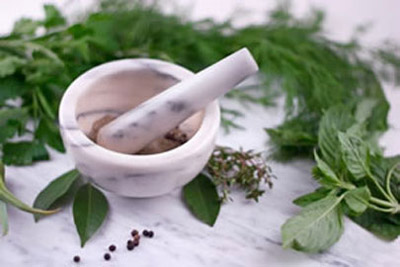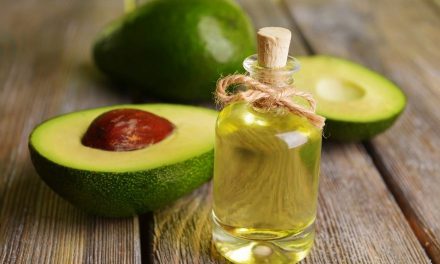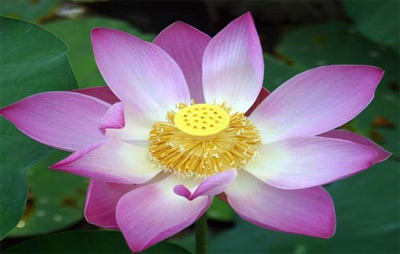Shankhapushpi or Convolvulus pluricaulis is an indigenous plant commonly mentioned in Ayurveda, an ancient system of Indian medicine, as a rasayana which is mainly advocated for use in mental stimulation and rejuvenation therapy. Little human research has been published in the Western medical literature regarding this plant.
One study shows shankhpushpi to have anti-ulcer effects due to augmentation of mucosal defensive factors like mucin secretion and glycoproteins. Another study showed that shankhapushpi may be helpful in improving symptoms of hyperthyroidism by reducing the activity of a liver enzyme.
The whole herb is used medicinally in the form of decoction with cumin and milk in fever, nervous debility, loss of memory, also in syphilis, and scrofula. Shankhapushpi is used as a brain tonic. Is used as a tonic, alterative and febrifuge. It is a sovereign remedy in bowel complaints especially dysentery. The plant is reported to be a prominent memory improving drug. It is used as a psychostimulant and tranquilizer. It is reported to reduce mental tension. The ethanolic extract of the plant reduces total serum cholesterol, triglycerides, phospholipids and nonesterfied fatty-acid.
Shankpushpi is used traditionally to treat nervous debility, insomnia, fatigue, low energy level. The whole herb is used medicinally in the form of decoction with cumin and milk in fever, nervous debility, loss of memory.
Shankhapushpi is also used as a brain tonic. Is used as a tonic, alterative and febrifuge. It is a sovereign remedy in bowel complaints especially dysentery. The plant is reported to be a prominent memory improving drug. It is used as a psychostimulant and tranquilizer. It is reported to reduce mental tension. The ethanolic extract of the plant reduces total serum cholesterol, triglycerides, phospholipids and nonesterfied fatty-acid.
There is a pertinent reference in Ayurvedic literature about the use of the drug as a brain tonic in hypotensive syndromes. The pharmacological studies of the herb have shown varying degree of its hypotensive and tranquilizing effects.
Clinical studies have exhibited demonstrable beneficial effects in the patients of anxiety neurosis. The herb induces a feeling of calm and peace, good sleep and a relief in anxiety, stresses, mental fatigue, producing a significant reduction in the level of anxiety, neuroticism arising due to various levels of stresses.
The herb appears to produce its action by modulation of neuro-chemistry of the brain. Further, the herb is non-toxic and its use does not produce any side effects. On the other hand, there is invigorating effect in improvement of health and weight gain.
Ayurvedic classics namely Charak, Sushrita, Astang Sangrah and Astang Harida provide ample reference for management of various diseases. According to Ayurvedic concept, Rasayan therapy simultaneously effects the body and mind and brings about physical and phschic improvement. This therapy prevents the effects, ageing, develops intelligence and increases the body resistance agains diseases.
There is an imperative need for in-depth scientific investigations on the specific ideology of medicines and the procedure of Rasayan Chikitsa discussed in Ayurveda.
The World Health Organisation has laid down that “”Health is a state of complete physical, mental and social well being and not merely absence of disease or infirmity””. Rasayana drug in Ayurveda may be equated with modern immunomodulator drugs since they possess similar properties and perform similar functions.
A twining perennial herb, Convolvulus pluricaulis occurs in the plains of Northern Indian and Bihar. The whole plant is one of the most important Medha Rasayana drugs in Ayurveda. Its use improves the balance and vitiation in Kapha-vata-pitta doshas and the herb is astringent and bitter.
Chemical studies of whole plant have shown the presence of glycosides, coumarins, flavonoids and alkaloids. Shankha pushpine, (the alkaloid) has been identified as the active principle. B. sitosterol glycoside, Hydroxy Cinnamic acid, Octacosanol tetracosane alongwith glucose, sucrose also have been isolated from the plant.
Physical appearance: Shankhpushpi is a perennial herb with a small woody and branched rootstock, 4 to 12 inches long, densely hairy. The branches rise up to some extent and then prevails on the ground and on grass. The leaves are 1/2 an inch to 1.5 inches long. The petiole is minute and the base is acute. The flower has wide and shiny upper parts, and it smells like radish if it gets rubbed. The flowers are white, pink or thick rose colour. It has funnel shaped rounds and brownish or blakish coloured seeds. The entire bush is black plum or grey colour.
In the rainy season Sankha Pushpi would be found naturally on rocky and fallow lands in India. It is expansive and is seen in grass like seedlings. In many places this is a perennial plant. The stems live many years. By the colour distinction in the flowers it can be divided into three categories. 1. White 2. Blue 3. Canscora decussate (Gentianaceac). This plantis also called as Shankhahuli. In most places doctors call this flower as Shankha Pushpi. In fact, for the medicinal purpose, one should use the white flower only.
Family name: Convolvulaceae
Latin: Evolvulus alsinoides Linn
Sanskrit: Shankha Pushpi
Chemical Composition of Shankhapushpi:
One Shankapushpi alkaloid and two Crystalline substances are found there in.
Useful parts of the plant: Seed, bark, Flower, fruit, root – panchang (five parts).
Improving memory with Shankhpushpi:
1. Take 3 to 6 grams of Shankhapushpi powder with milk early in the morning to enhance the memory power. Fatigue would vanish if you are studying for long hours.
2. Give 2 to 4 grams of Shankhapushpi powder with 1 gram of Sweet Flag (bach) powder to raise intelligence in children and to make them sharp.
3. Take its powder 2-4 grams, adding it to honey or sugar for 6 months. Wrinkles would disappear from your face in the old age. Memory power and astuteness would be increased.
4. For Sharp memory take 3 to 6 grams Shankhapushpi powder and honey with milk.
Treating Epilepsy with Shankhpushpi:
1. Take 2 grams of Shankhapushpi juice with honey to cure epilepsy.
2. Take powders of Shankhapushpi, Sweet flag and Brahmi in equal quantities. To cure epilepsy , hysteria and delirium take 3 grams of this mixture twice a day.
3. Dry in the shade 1 kilogram of Shankhapushpi, add 2 kilograms of Sugar and make powder. sieve it and fill in bottles. Take 5 to 10 grams with milk for better memory.
4. Shankhapushpi’s juice 10-20 grams, powder of Saussurea lappa roots (kooth) 500 grams with honey to cure epilepsy.
5. Take swaras of Shankhapushpi with honey to cure the state of delirium.
Treatment for Head Ache with Shankhpushpi:
Shankhapushpi 1 gram, Black Henbane 250 milligrams with hot water to remove headache within 5 minutes.
Treatment for Vomiting with Shankhpushpi:
Take panchang of Shankhapushpi juice, 2 spoons, add one quid of black pepper powder and give it with honey over and over again to control vomiting.
Cure for Bed Urination with Shankhpushpi:
If child is urinating in their bed at night times, give Shankhapushpi’s powder 2 grams and black sesame 1 gram along with milk to check bed urinating problem.
Treatment of Diabetes with Shankhpushpi:
1. Take Shankhapushpi 6 grams morning and evening along with cow’s butter or with water to control diabetes.
2. To overcome the weakness caused by diabetes, take 2-4 grams of powder or swaras of 10-20 mg.
Treatment for Sun Stroke with Shankhpushpi:
When the patient would get unconscious state and babbling, you may give Shankhapushpi powder 5-10 grams with milk and honey for the benefit of the patient.
Treatment for Bleeding with Shankhpushpi:
Take 10-20 grams swaras of Shankhapushpi, add it with honey to control bleeding.
Treatment for High Blood Pressure with Shankhpushpi:
Take fresh swaras of Shankhapushpi 10-20 mg. every morning and evening for some days to get rid of High blood pressure.











GOD BLESS YOU